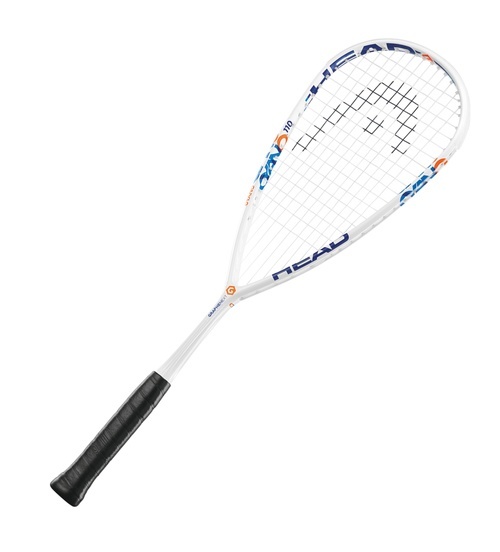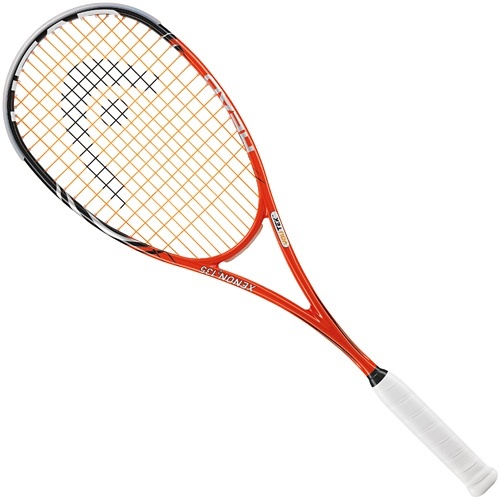The Squash Company’s complete guide to squash strings
In most cases a racket will come with poor quality factory squash strings which don’t have the performance of squash strings purchased from a stringer. Some players will even have their rackets re-strung as soon as they’ve bought them without even using the default strings.
There are some manufacturers who have deals in place with major string manufacturers. Black Knight rackets often come pre-strung with Ashaway strings and Tecnifibre rackets utilise their own popular strings.
String type and tension is, however, very important in the performance and style of a racket.
Which strings should you buy?
The strings you should buy depend on how much you play and what you prefer. The best performance strings are Ashaway and Tecnifibre, but these are also the most expensive and are typically less durable than cheaper options.
Unless you are playing to a high level, or are not bothered by the extra cost, it is probably better to go for the mid-range options, which are typically labelled as ‘synthetic gut’ and similar names. Most stores and stringers have their own preferred, mid-price string that they use.
What tension should you get?
The tighter your strings, the easier it is to get control and the looser your strings, the easier it is to get power. Of course, any accomplished player should be able to achieve both power and control with any reasonable string tension! It mostly comes down to preference in the end. You also might find as you become more experienced, that a higher tension suits a racket more than a lower one or vice versa.
The most common string tension is usually around 26Ibs, which is fairly middling and neither too tight nor too loose.
Higher tension – 28Ibs or above
Tension around 28Ibs is typically the highest you want for a racket. Any tighter than this, and you will be putting quite a lot of pressure on your frame. You are also going to make it hard to achieve power with your shots and you will also make it a bit more likely your strings will snap or wear away a bit quicker.
Medium tension – 24-27Ibs
As mentioned above, 26Ibs or thereabouts is the typical tension favoured by most stringers. If you haven’t got a particular preference or are unsure what to get, this is the best range to go for.
Loose to medium tension – 22-24Ibs
Having your racket strung between 22-24Ibs is on the loose side of normal but isn’t out of the ordinary. If you wanted to try having looser strings, this would be the tension range to go for to get a feel for it without doing anything too drastic. This might be worth considering if you thrive on a hard-hitting game to try and maximise your strength.
Very loose tensions – 21 lbs or under
Having your racket strung at 21Ibs or lower is quite uncommon and this is typically only used by very particular players or professionals who know exactly what they want. It is believed that Gregory Gaultier has his racket strung at 14Ibs, which beggars belief! Maybe he knows something we don’t!
When you have your strings strung this loose, you may find it more difficult to achieve accurate drop shops and ‘touch’ at first.
String gauge/thickness
Squash strings only come in 17 or 18 gauges. If yours is different to this, you may have been given strings intended for racketball, or tennis if they are around 15, and badminton if they are around 20 gauge.
The 17 gauge is slightly thicker than an 18 gauge – typically 1.25mm vs. 1.15mm or thereabouts – and so will last longer. However, you will get slightly more power with an 18 gauge to make up for the slightly reduced durability. Much like other things involving your racket, it’s down to your needs and personal preference.
How your racket can affect your strings – minimising the risk of snapping
The effect of racket shape on strings
The shape of the racket can have an impact on the life of your strings, as some rackets put more tension on certain areas of the string, which can cause strings to snap or wear quicker. Unfortunately, with tear-drop shaped rackets, the strings tend to break earlier, as the string bed is very long and so the strings are pulled tight over a longer area, which means the vertical strings are more prone to snapping.

Round headed rackets tend to last a bit longer as the vertical strings aren’t pulled down over such a long area and so are less prone to snapping.

Grommets
Grommets protect your strings from being cut into by the frame and so if they are damaged or missing, strings may break sooner than expected. This can really put your strings at risk of snapping if you hit an off-centre shot.
Mis-hitting the ball and off-centre shots
If you typically hit the ball in the middle of your strings, you will most likely get the best out of your strings. If used correctly, strings should eventually break around the centre due to the repetitive impact of the horizontal and vertical strings when you hit the ball, resulting eventually in one of the strings cutting deep enough into another to snap it.
However, be warned: if you mis-hit the ball frequently or maybe even just hit the ball off-centre once, you may snap the strings. This is not because of faulty strings or a poor stringing job and it is usually not the racket (though as mentioned elsewhere in the article you want to check on the grommets, bumper and frame!), but because the strings can’t properly absorb an impact around the edges of the string bed. Ordinarily when you hit the ball in the middle of the strings, the surrounding strings around the ball will absorb the impact. When you catch the ball on the strings near the frame, the strings can’t stretch around the entirety of the ball and so the strings on one side of the ball take the brunt of the impact, which can result in them snapping.
Damaged bumper strips
If you have a damaged bumper strip, you may find that strings snap etc., when your racket hits the floor or wall. Hitting the floor or wall can be rather hard to avoid and so if you have a racket with a damaged bumper, it is worth putting electrical or racket tape over the top of the racket to protect the strings until you can get a new one when you have your racket re-strung. If your bumper strip is damaged, you need to make sure that there are no sharp bits of plastic attached or hanging off which could hurt your opponent. It is your responsibility to remove these bits and put tape over the affected areas.
If you have a racket model which doesn’t come with a bumper strip, you might also want some electrical or racket tape for extra protection, although this may alter the balance of the racket slightly.
Miscellaneous points about strings
Stringing your racket with cracks in the frame
If your frame has a crack, your stringer might refuse to string the racket as it is quite possible the frame will crack when the pressure and tension needed to string the racket is applied. You might be able to get them to re-string the racket in spite of this, but be warned you’ll need to pay extra and there is no guarantee your racket will make it through the process without breaking completely.
Buying a reel of string
If you do have a favoured brand of string and you play a lot, it is worth your time and money to buy a reel of string. You can then leave this with the stringer when you get your racket restrung and they will only charge you for labour, which will save you money in the long run.
For more information about what equipment to use, we also have detailed guides on rackets and balls.

Hi Nic
this might sound a crazy question but is there a formula on which will work out what tension you should string your racket?
hamzee
Hi Hamzee – there isn’t really, no. It is largely a personal preference. I would say your formula should simply be to try a couple of different tensions and see which you prefer
Hi Nic, which racquets have 390mm string length, thanks, Andrei
Hi Andrei,
I’m not sure exactly what you mean.
If you mean the size of the string bed, that is usually given as a number between 450-500cm squared (surface area of the racket face/string bed)?
390mm is also a figure that might refer to a racket’s balance (whether it is head heavy or head light)?
Hi nick as a woman I sometimes wonder whether there is different advice for female players? We are inherently less muscular and as such should we pick particular racket/ strings? I use the yellow karakal ff teardrop with strings at 24
Hey Sue,
In honesty, it doesn’t vary too much – it’s always preference. It’s only young juniors who really need to make sure they get very light rackets. After that, there is always a strong element of preference – I am 6″2 and I prefer a racket that is light and head heavy. Typically, such a racket might be recommended to women as it’s easy to lift overhead and use to volley, but it also gives you extra power by virtue of being head heavy, which women often find harder to generate.
Often female players will use lighter rackets simply because the lighter racket is easier to manoeuvre, particularly on the volley and overhead. The women’s game is typically more technical and less powerful, and so losing out on the bit of power a heavier racket might add isn’t a big deal.
But really, it is a preference on thing, and does depend on your style. If you think you need more power and you are a smaller, I’d try a light racket – 110-120Ibs – which is head heavy.
On the strings, 24 is perhaps a touch on the light side of average and a good tension I’d say. You could try a lighter tension if you think you could do with a bit more power – say 22Ibs. If you do want more control or to make any touch shots even better, you could go higher to 26 or 28Ibs.